Articles
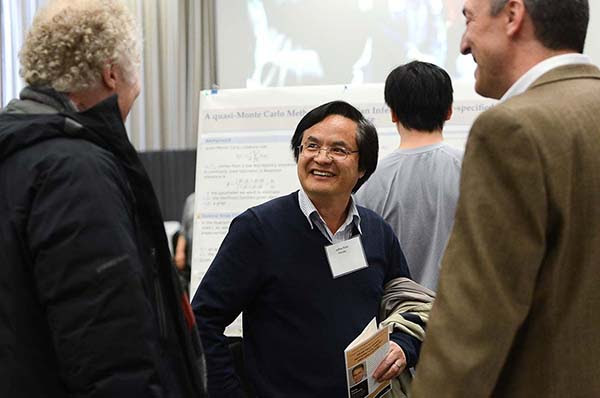
Congratulations to Professor Jinqiao Jeffrey Duan on receiving a DOE grant in support of developing ŌĆ£Inertial Neural Surrogates for Stable Dynamical Prediction.ŌĆØ The grant award is in collaboration with Romit Maulik, research assistant professor of applied mathematics and assistant computational scientist at the Mathematics and Computer Science Division at Argonne National Laboratory. This is the first year of the project which targets ŌĆ£advances in modeling, analyzing, and predicting dynamical behaviors of complex systemsŌĆØ. More information is available in IITŌĆÖs article ŌĆ£Long-Term Predictions, Hold the ŌĆśExplosionsŌĆÖŌĆØ.
The abstract for the grant is as follows:
Experimental, observational and simulated data are noisy as well as time evolving. Stochastic dynamical systems theory and methods thus play significant roles in data science. Many DOE-relevant applications, such as those in geophysical modeling and fusion energy sciences, can benefit from building accurate, stable and efficient dynamical system surrogates from multimodal data using scientific machine learning (SciML). Many systems that arise from such applications have a large fraction of their interesting dynamics constrained to a low-dimensional manifold. However, low-dimensional data-driven dynamical system surrogates exhibit poor performance when used for long-time predictions, even when interpolations and short-time predictions seem reasonable. State-of-the-art large-scale dynamical system training relies almost entirely on cost-function minimization with simple stability promoting extensions, such as ad-hoc constraints on the Jacobian, or regularizations of the neural network, to promote smoothness. Unfortunately, these methods do not address the limited stability of data-driven surrogate models particularly in the presence of unknown adversarial perturbations, for example, when they are de-
ployed autoregressively. For long-term predictions, low stability manifests itself as solutions that explode or converge to unphysical hyperbolic sets. This project aims to address stable long-time prediction from massive datasets of high-dimensional dynamical systems. The project consists of two primary innovations:
(1) adaptive, standardized manifold discovery techniques and
(2) manifold constrained surrogate learning with enhanced stability.
The potential DOE-relevant applications of the proposed approaches include datasets related to climate and weather predictions and datasets related to fusions energy sciences.
Nik Sultana, Illinois Institute of Technology, Computer Science.
November 23, 2021. 12:45 ŌĆō 1:45 pm.
John T. Rettaliata Engineering Center, Room 106.
In this talk IŌĆÖll describe my research targeting data networks that are used in computational science and cloud datacenters. An exciting trend in this domain is that the network is becoming more programmable ŌĆö capable of running simple programs independently of connected devices ŌĆö and this creates both research opportunities and practical challenges. IŌĆÖll give some background on how this programmability has surfaced at different times in networking research, and describe how my current work is improving the state of the art.
Code and demo examples of my work are available at:
Yan Yan, Illinois Institute of Technology, Computer Science.
November 23, 2021. 12:45 ŌĆō 1:45 pm.
John T. Rettaliata Engineering Center, Room 106.
Image and video scene understanding is to acquire the information about What, When, Where, Who, How, and Why for the situation that captures the attributes and structure of a scene in images/videos. Image and video scene understanding is a challenging task in computer vision and is an important step to realize artificial intelligence. Multi-task learning, as one important branch of machine learning, has developed fast during the past decade. Multi-task learning methods aim to simultaneously learn classification or regression models for a set of related tasks. This typically leads to better models as compared to a learner that does not account for task relationships. In this talk, we will investigate a multi-task learning framework for image/video scene understanding from low-level to high-level tasks including human pose estimation, action/activity recognition, semantic segmentation and event detection. Moreover, extracting useful information from images/videos requires robustness which depends on different sensors. As we know, humans explore the world via different perceptions and multi-modal signals such as audio, visual and language. Therefore we will also investigate the multi-modal learning approach to improve image/video scene understanding.
Kai Shu, Illinois Institute of Technology, Computer Science.
November 16, 2021. 12:45 ŌĆō 1:45 pm.
John T. Rettaliata Engineering Center, Room 106.
In recent years, fake news has become a global phenomenon, particularly so during the pandemic, COVID-19. The wide dissemination of fake news can have detrimental societal effects on individuals and the society. Despite the recent progress in detecting fake news, it remains a challenging task due to its complexity, diversity, multi- modality, speed, and costs of fact-checking or annotation. In this talk, we look at some lessons learned when exploring effective and explainable detecting strategies of fake news, and discuss challenges in fake news research and the need for interdisciplinary research.
Baisravan HomChaudhuri, Illinois Institute of Technology, MMAE.
November 16, 2021. 12:45 ŌĆō 1:45 pm.
John T. Rettaliata Engineering Center, Room 106.
Decision making for automated systems in the presence of uncertainty is a challenging yet ubiquitous problem (e.g., automated vehicle control) that has significant potential for societal impact. For example, autonomous vehicles can improve emission and energy-efficiency of the transportation system, which contributes 29% of greenhouse gas emissions and 142 billion gallons of gasoline was consumed in 2019 in US. The automated systems technology industry has potential for tremendous growth. The global autonomous vehicle market is projected to reach $556 billion by 2026, while small unmanned aerial systems are projected to be a $30 billion industry by 2029. Recent market research highlights safety as one of the major factors that can impact this growth. Hence, ensuring safety of these automated systems, while improving their performance (e.g., energy efficiency), is of utmost importance. This research will specifically focus on safe and energy-efficient vehicle control methods, which is a challenging problem due to uncertainties in the system, nonlinear system dynamics, and non-convexity in the decision making problem. The problem is aggravated when these automated vehicles work in close proximity to human-operated vehicles. This research aims at addressing these challenges by developing new stochastic optimal control methods and developing a suggestion-based control framework that exploits inter-vehicular communication.
Seminars in this series will highlight how computational methods such as artificial intelligence are being applied to addressing the COVID-19 pandemic. Computation is being used in many ways including predicting the spread of the disease, understanding its mechanism, and designing diagnoses, treatments, and vaccines.
The mission of CISC is to encourage interdisciplinary scientific computation research. To strengthen the use of computation in other disciplines, CISC is offering a summer fellowship to support Ph.D. dissertation research that involves computational science.
Estimated Number of Awards: 4 to 6
Award Size: $3,000 ŌĆō $5,000
Application Deadline: May 30, 2020 (5:00 p.m.)
The following components are required in the application
- A research proposal including the following (2 pages)
- Title, Student Name, Dissertation Advisor, and Academic Unit
- Description of the research program and its significance
- CV of the student (one page)
- A signed statement from the advisor (one page)
ŌĆ£I confirm that the student meets the eligibility requirement, and that the work to be performed is aligned with the studentŌĆÖs Ph.D. dissertation and will not delay the studentŌĆÖs graduation.ŌĆØ
Submission
Combine all documents in one PDF file and submit to Aleksei Sorokin (asorokin@hawk.illinoistech.edu), with a subject line ŌĆ£CISC 2020 Ph.D. Students Summer FellowshipŌĆØ.
Requirements
- The proposed research activities must involve computation.
- The proposal must identify at least one application area beyond computation and demonstrate the synergy between computational methods and applications.
- The proposed research activities shall not be repeating the proposed work in a funded research grant. They should be additional and supplemental to the grant.
Eligibility Information
- Applications may only be submitted by current full-time Ph.D. students at ┬╠├▒╔ń.
- Incoming students are not eligible.
- Graduating students who will not enroll in the fall semester are not eligible.
Review
A panel will review the applications and notify the selected applicants by June
15, 2020.
Reporting
A three-page final report will be required within 12 months of the award. The
report shall detail what has been achieved, and list the publications and
presentations resulted from the proposed research.
┬╠├▒╔ńŌĆÖs ŌĆ£Computational Science Class for High School StudentsŌĆØ was recently ranked among the top 50 best pre-college summer technology programs for high school students by ! This course focuses on integrating math and science with computation through using real-world tools to model and explore high level concepts. Classes heavily integrate hands-on learning which allows students to sharpen their computational thinking skills: skills that are crucial to any position in the tech world.
Illinois Institute of Technology recently become an affiliate university of the . The Fields Institute provides many different opportunities for students and teachers through offering a variety of scientific programs, fellowships, and research prize competitions. Although Fields Institute activities are open to the mathematical sciences community, the agreement between an Affiliate University and the Institute establishes a closer relationship of great mutual benefit. Some of the numerous benefits of this partnership include: participate in the organizing committees of thematic and focus programs, receive funding and full logistical support for Fields general scientific activities, apply for sabbatical stays at the Institute, etc. There are also funding opportunities for students, early career researchers, and women faculty.
┬╠├▒╔ńŌĆÖs Center for Interdisciplinary Scientific Computation (CISC) was formed in spring 2017 to act as a focal point and catalyst to strengthen the use of computation to solve important academic and practical problems. In support of this mission, the center is now offering a matching fund to hire postdocs. CISC will provide up to 25% of salary and benefits for the selected postdoc candidates. Applications will be accepted until the deadline.
Requirements
- The proposed research activities of the postdoc must involve computation.
- The proposed research activities of the postdoc shall not be repeating the proposed work in the external grant. They should be additional and supplemental to the proposed work in the external grant.
- The other 75% of funds must come from current external grants.
- The postdoc must be employed for one year or longer.
- Applications may only be submitted by a tenured/tenure track faculty member at IIT.
Application Deadline: March 10th, 2019
Submission
- Statement of work (two pages).
- Significance of the research program and its relevance to CISCŌĆÖs mission (one page).
- CV of the postdoc (if known).
- Budget plan: the proposed 12-month salary for the postdoc and the expected starting date for CISC support.
- External grant information: funding agency, award number, amount, period of support, and the title of the project.
Combine all document in one pdf file and submit to Aleksei Sorokin (asorokin@hawk.iit.edu), with a subject line ŌĆ£CISC Postdoc ApplicationŌĆØ.
Review: A panel will review the applications and notify the selected applicants by March 31st, 2019.
Reporting: A three-page final report will be required at the end of the funding period.
The ability to break down a complex problem into manageable parts, recognizing not only its trend but also identifying the general principles that generate these patterns and develop an algorithm for solving this and other similar problems, is a highly sought-after skill set that is critical for the future technological workforce. The need for teaching computational thinking has long been advocated by many education experts. IIT has taken up the mission to integrate computational thinking in its courses and provides early access for this mode of reasoning to college and high school students by running a 3 weeks summer computational camp since 2013.
To participate, students should have at least one year of science and completion of Algebra II; however, prior knowledge of programming is not required. This admission criteria helps us reach out to a broader audience, especially to students who are novice in computational science.
Even though students come in with different levels of sophistication, the project-oriented approach manages to pair students with their subject interests at their level of preparedness. This past year, students worked on 12 projects collaboratively in small groups and prepared individual write-ups. Each project investigated a different topic in science, mathematics, data science, and engineering with emphasis in computation.
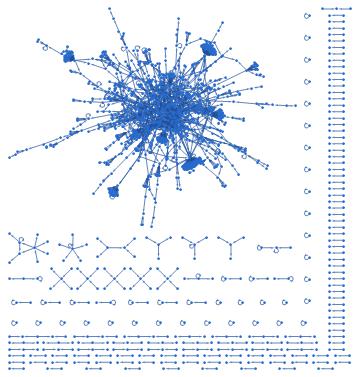 One project saw students use data obtained from the Dana-Farber Cancer Institute to construct protein-protein interaction networks (PPIN), as shown on the left. These network are key to the study of diseases including many cancers. Sorting through 1,817 pairs of protein interactions, students learned how to isolate important interactions by counting the vertex degrees of the network.
One project saw students use data obtained from the Dana-Farber Cancer Institute to construct protein-protein interaction networks (PPIN), as shown on the left. These network are key to the study of diseases including many cancers. Sorting through 1,817 pairs of protein interactions, students learned how to isolate important interactions by counting the vertex degrees of the network.
Using data from the Sunspot Index and Long-term Solar Observation (SILSO), students learned to analyze a big data set of 73,000 data points in order to compute the average time span between solar maximum and solar minimum.
These activities give students a glimpse of how computational tools such as Mathematica can be employed to handle the complexity of real world problems. Mathematica is the program of choice for this course as the Wolfram Language allows participants to think and code at a higher level, therefore allowing an emphasis on computational reasoning over syntax.
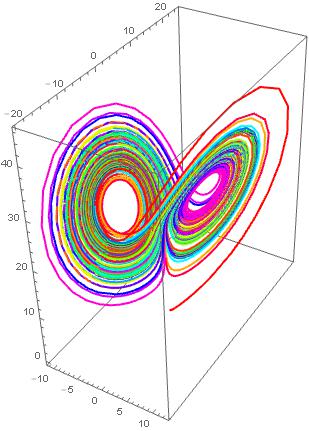 Through the aid of Mathematica, students were given the opportunity to explore advanced mathematical subjects such as the study of dynamical systems. They learned how set up mathematical models from differential equations and obtain the solution using the computer algebra system. Logistic equations, various spring-mass systems, and NewtonŌĆÖs law of cooling were some of the topics explored in the projects. A brief introduction of chaos theory was also presented through the study of three-dimensional autonomous systems such as Lorentz equations. This project studied the behavior of solutions to the Lorenz equation, and their relation to the concept of solution stability.
Through the aid of Mathematica, students were given the opportunity to explore advanced mathematical subjects such as the study of dynamical systems. They learned how set up mathematical models from differential equations and obtain the solution using the computer algebra system. Logistic equations, various spring-mass systems, and NewtonŌĆÖs law of cooling were some of the topics explored in the projects. A brief introduction of chaos theory was also presented through the study of three-dimensional autonomous systems such as Lorentz equations. This project studied the behavior of solutions to the Lorenz equation, and their relation to the concept of solution stability.
Employment of computational tools are not limited to science and engineering, but permeate through all human endeavor. This fact was illustrated by introducing student to some aspects of computational linguistics such as the study of n-grams. The term n-grams refers to a contiguous sequence of n items from a given sample of text or speech. In one project, students were asked to perform an n-grams analysis on DarwinŌĆÖs Origin of Species. Such analysis has application in many areas such as forensic authorship attribution where writers of anonymous criminal documents were identified.
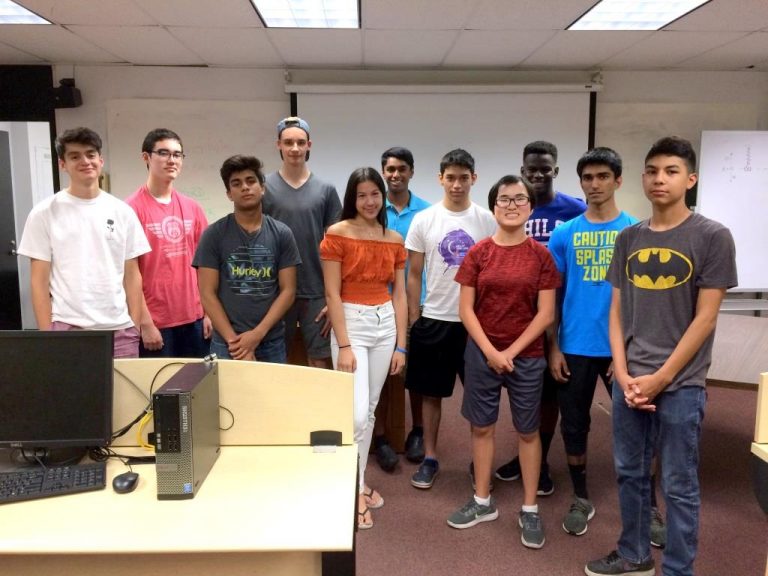 The 2018 summer computational science course attracted 11 participants from high school across the country. Three weeks of immersive classes and projects saw students become fluent in implementing various computational ideas into programs, a skill which positions them for an exciting and interesting career in the future.
The 2018 summer computational science course attracted 11 participants from high school across the country. Three weeks of immersive classes and projects saw students become fluent in implementing various computational ideas into programs, a skill which positions them for an exciting and interesting career in the future.
This course will next be available in Summer 2019: July 22 ŌĆō August 9. More details will be added to this page when available.
If you have any questions, please contact professor Kiah Ong, senior lecturer of Applied Mathematics, at kong2@illinoistech.edu.
Congratulations to Professor Xian-He Sun on receiving the National Science Foundation (NSF) Framework Grant in support of the project, ŌĆ£Framework: Software: NSCI: Collaborative Research: Hermes: Extending the HDF Library to Support Intelligent I/O Buffering for Deep Memory and Storage Hierarchy Systems.ŌĆØ The grant award is in collaboration with Ann Johnson and Jian Peng of the University of Illinois at Urbana-Champaign. This is the first year of the project which targets advancement for big data applications.
Learn more about Xian-He Sun here.
The abstract for the follows:
Modern high performance computing (HPC) applications generate massive amounts of data. However, the performance improvement of disk based storage systems has been much slower than that of memory, creating a significant Input/Output (I/O) performance gap. To reduce the performance gap, storage subsystems are under extensive changes, adopting new technologies and adding more layers into the memory/storage hierarchy. With a deeper memory hierarchy, the data movement complexity of memory systems is increased significantly, making it harder to utilize the potential of the deep memory and storage hierarchy (DMSH) design. As we move towards the exascale era, I/O bottleneck is a must to solve performance bottleneck facing the HPC community. DMSHs with multiple levels of memory/storage layers offer a feasible solution but are very complex to use effectively. Ideally, the presence of multiple layers of storage should be transparent to applications without having to sacrifice I/O performance. There is a need to enhance and extend current software systems to support data access and movement transparently and effectively under DMSHs. Hierarchical Data Format (HDF) technologies are a set of current I/O solutions addressing the problems in organizing, accessing, analyzing, and preserving data. HDF5 library is widely popular within the scientific community. Among the high level I/O libraries used in DOE labs, HDF5 is the undeniable leader with 99% of the share. HDF5 addresses the I/O bottleneck by hiding the complexity of performing coordinated I/O to single, shared files, and by encapsulating general purpose optimizations. While HDF technologies, like other existing I/O middleware, are not designed to support DMSHs, its wide popularity and its middleware nature make HDF5 an ideal candidate to enable, manage, and supervise I/O buffering under DMSHs. This project proposes the development of Hermes, a heterogeneous aware, multi tiered, dynamic, and distributed I/O buffering system that will significantly accelerate I/O performance.
This project proposes to extend HDF technologies with the Hermes design. Hermes is new, and the enhancement of HDF5 is new. The deliveries of this research include an enhanced HDF5 library, a set of extended HDF technologies, and a group of general I/O buffering and memory system optimization mechanisms and methods. We believe that the combination of DMSH I/O buffering and HDF technologies is a reachable practical solution that can efficiently support scientific discovery. Hermes will advance HDF5 core technology by developing new buffering algorithms and mechanisms to support 1) vertical and horizontal buffering in DMSHs: here vertical means access data to/from different levels locally and horizontal means spread/gather data across remote compute nodes; 2) selective buffering via HDF5: here selective means some memory layer, e.g. NVMe, only for selected data; 3) dynamic buffering via online system profiling: the buffering schema can be changed dynamically based on messaging traffic; 4) adaptive buffering via Reinforcement Learning: by learning the applicationŌĆÖs access pattern, we can adapt prefetching algorithms and cache replacement policies at runtime. The development Hermes will be translated into high quality dependable software and will be released with the core HDF5 library.
The Center for Interdisciplinary Scientific Computation (CISC) at ┬╠├▒╔ń is announcing a series of faculty matchmaking seminars for fall 2018. The purpose of these informal seminars is to familiarize attendees with a faculty memberŌĆÖs research in scientific computation with an eye on facilitating interdisciplinary collaboration. They are not meant to be in-depth research talks. Rather, speakers are encouraged to highlight relevant research areas and suggest possible ways in which they could potentially interact with other disciplines. They will prepare for a 20-minute presentation, and questions will be allowed at any time.
Seminars will be held during the lunch hour, with two speakers per session, and are open to all ┬╠├▒╔ń affiliates. Lunch (omnivorous or vegetarian) will be provided to those who RSVP. Seminars are planned on the following dates:
Tuesday, September 18 at 12:45 p.m. in John T. Rettaliata Engineering Center, Room 102 ŌĆō ŌĆ£Analyzing Online Social Networks for Interdisciplinary ScienceŌĆØ by Aron Culotta (computer science) and ŌĆ£Applied Quantum ChemistryŌĆØ by Andrey Rogachev (chemistry).
Tuesday, October 23 at 12:45 p.m. in John T. Rettaliata Engineering Center, Room 103 ŌĆō ŌĆ£Statistical Design and Modeling for Physical and Computer ExperimentsŌĆØ by Lulu Kang (applied math) followed by a talk from Ron Landis (psychology).
Wednesday, November 7 at 12:45 p.m. in John T. Rettaliata Engineering Center, Room 102 ŌĆō ŌĆ£Modeling Dynamics in Soft MatterŌĆØ by Jay Schieber (chemical and biological engineering) and ŌĆ£IIT DBGroup Research ProfileŌĆØ by Boris Glavic.
Titles and abstracts will be made available closer to the seminar dates.
If you have any questions, please contact David Minh, assistant professor of chemistry and associate director of the CISC, at dminh@illinoistech.edu.
Simulation modeling involves creating a digital and dynamic representation of a system or process and conducting experiments to predict performance under a variety of conditions. This overview of techniques, tools, modeling methods, project management best practices and demonstration models will introduce the attendee to the art and science of simulation modeling.
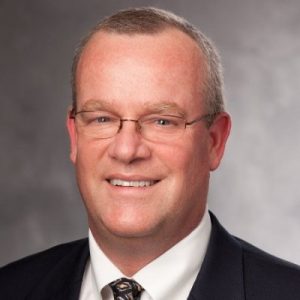
Rainer Dronzek has held engineering and management positions in the aerospace, oil &
gas and consulting industries. He was first introduced to simulation modeling while
working on the Space Shuttle Program at the Kennedy Space Center. His simulation-
modeling experience includes managing teams and projects; founding a consulting firm;
using, and providing training in, a wide range of software applications; working with
educational institutions; and organizing events and conferences.
, a global company with headquarters in Chicago, produces multi-method
simulation software used by 40% of Fortune 100 companies.
According to computer science rankings from , Illinois Institute of Technology is ranked 15th in the nation for High Performance Computing. Congratulations to our high performance computing group.
The Center for Interdisciplinary Scientific Computation (CISC) at ┬╠├▒╔ń is announcing a series of faculty matchmaking seminars for spring 2018. The purpose of these informal seminars is to familiarize attendees with a faculty memberŌĆÖs research in scientific computation with an eye on facilitating interdisciplinary collaboration. They are not meant to be in-depth research talks. Rather, speakers are encouraged to highlight relevant research areas and suggest possible ways in which they could potentially interact with other disciplines. They will prepare for a 20-minute presentation, and questions will be allowed at any time.
Seminars will be held during the lunch hour, with two speakers per session, and are open to all ┬╠├▒╔ń affiliates. Lunch (omnivorous or vegetarian) will be provided to those who RSVP. Seminars are planned on the following dates:
Tuesday, March 6 at 12:45 p.m. in Stuart Building, Room 104 ŌĆō ŌĆ£Efficient Monte Carlo SimulationsŌĆØ by Fred Hickernell (applied math) and ŌĆ£Promoting Productivity of High Performance ComputingŌĆØ by Zhiling Lan (computer science).
Monday, March 26 at 12:45 p.m. in the Robert A. Pritzker Science Center, Room 121 ŌĆō Andrey Rogachev (chemistry) and Ron Landis (psychology).
Wednesday, April 4 at 12:45 p.m. in the Robert A. Pritzker Science Center, Room 121 ŌĆō Sonja Petrovic (applied math) and Tom Irving (biology).
Tuesday, April 24 at 12:45 p.m. in the Robert A. Pritzker Science Center, Room 121 ŌĆō Sohail Murad (chemical and biological engineering) and Abhinav Bhushan (biomedical engineering).
Titles and abstracts for the last three sessions will be made available closer to the seminar dates.
If you have any questions, please contact David Minh, assistant professor of chemistry and associate director of the CISC, at dminh@illinoistech.edu.
The Center for Interdisciplinary Scientific Computation (CISC) at ┬╠├▒╔ń has awarded a $40,000 seed grant to Sonja Petrovi─ć and Lulu Kang, associate professors of applied mathematics, and Mahima Saxena, assistant professor of psychology. The grant is for an interdisciplinary project that combines statistics, computational mathematics, and psychological sciences to study worker experiences specific to occupational health psychology.
Specifically, the project will develop computational models to understand the changing nature of employee health and well-being. They will also address computational problems that accompany such statistical models. The substantive goal of this project is to ultimately have a deeper understanding of the experiences that impact workplace behaviors so that workers have positive daily experiences, both in and outside of the workplace. This is especially relevant given todayŌĆÖs highly stressed workforce.
ŌĆ£One goal of the CISC is to promote cross-disciplinary scientific computation research that attracts significant external funding,ŌĆØ said Fred Hickernell, director of the center and professor of applied mathematics. ŌĆ£Through our lunchtime matchmaking seminars, we connect researchers with potential collaborators. The CISC seed grant goes a step further by providing up to funding for one year to a research project that demonstrates the potential of attracting external funding.
ŌĆ£Last fall we received several strong proposals,ŌĆØ he continued. ŌĆ£The project selected made the best case that the funding sought would substantially increase the possibility of external funding for cross-disciplinary scientific computation research. Funding agencies often look for a track record and/or preliminary results, and the seed grant facilitates that by providing the investigators the extra resources they need to develop those. We hope to be able to award seed grants annually.ŌĆØ
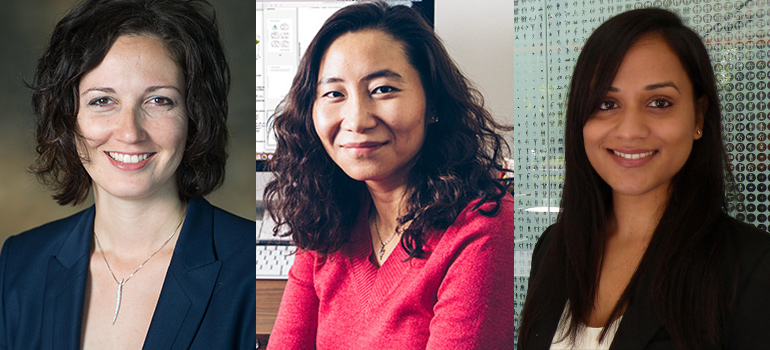
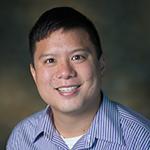 David Minh, assistant professor of chemistry, has been named associate director of the Center for Interdisciplinary Scientific Computation (CISC) at ┬╠├▒╔ń. The CISC promotes and advances transformative research and education in computational science, particularly interdisciplinary collaborations across academic units. Fred Hickernell, professor of applied mathematics, is the director of the center.
David Minh, assistant professor of chemistry, has been named associate director of the Center for Interdisciplinary Scientific Computation (CISC) at ┬╠├▒╔ń. The CISC promotes and advances transformative research and education in computational science, particularly interdisciplinary collaborations across academic units. Fred Hickernell, professor of applied mathematics, is the director of the center.
MinhŌĆÖs responsibilities will include continuation of the centerŌĆÖs lunchtime ŌĆ£matchmaking seminarsŌĆØ to facilitate collaborations between different research groups at ┬╠├▒╔ń. He also will promote utilization of ┬╠├▒╔ńŌĆÖs von Neumann cluster.
Minh is a National Institutes of Health-funded researcher who focuses on developing and applying computational methods for studying noncovalent interactions between proteins and small organic molecules. Minh received his Ph.D. in physical chemistry from the University of California, San Diego, and his B.A. in chemistry from the University of California, Berkeley.
While high-performance computers provide unprecedented resources for scientific discovery, the computational science and engineering (CSE) community faces daunting productivity and sustainability challenges for parallel application development. Difficulties include the increasing complexity of multiscale and multiphysics applications, the imperative of portable performance in the midst of disruptive architectural changes, and the demand for greater reproducibility of simulation and analysis results for predictive science. These challenges create the unique opportunity for the CSE community to fundamentally change how scientific software is designed, developed, and sustained, while explicitly acknowledging that next-generation applications increasingly require the combined use of independent packages, which have diverse sponsors, priorities, and processes for development and release.
This presentation will introduce the xSDK, or Extreme-scale Scientific Software Development Kit, which has the vision of providing a collection of complementary software elements as the building blocks for efficient development of high-quality applications. We will introduce xSDK community software policies (, which are increasing the quality, sustainability, and interoperability across independently developed packages. We will also discuss complementary efforts to increase scientific software productivity and sustainability.
is a senior computational scientist in the Mathematics and Computer Science Division of Argonne National Laboratory. Her research focuses on numerical algorithms and software for the parallel solution of PDE-based applications and related optimization problems using the PETSc/TAO library. Lois co-leads work on the Extreme-scale Scientific Software Development Kit (xSDK) and the IDEAS software productivity project, dedicated to engaging scientific software teams to identify and adopt practices that improve productivity and sustainability. McInnes received a Ph.D. in Applied Mathematics from the University of Virginia in 1993. She was named a SIAM Fellow in 2017. She won the 2015 SIAM/ACM Prize in Computational Science and Engineering (with collaborators). She won an Ernest Orlando Lawrence Award in 2011 for outstanding contributions in research and development supporting the Department of Energy and its missions. She served as chair (2015-16) and program director (2013-14) of the SIAM Activity Group on Computational Science and Engineering; she is co-chair of the 2018 SIAM Annual Meeting and serves on the SIAM Education Committee and the editorial board of SIAM News.
Light refreshments will be served after the lecture.
[ ]
The High Energy Physics (HEP) community is facing a daunting computing challenge in the upcoming years, as upgrades to the Large Hadron Collider and new technologies such as liquid argon detectors will require vast amounts of simulation and processing. Additionally, the stochastic nature of research suggests that leveraging elastically available resources would increase efficiency and cost-effectiveness. At the same time, the decreasing cost of renting commercial cloud resources and the increasing scale of High Performance Computing (HPC) facilities make them attractive targets for HEP workflows. The HEPCloud program aims to seamlessly integrate grid, cloud, and allocation-based facilities into a single virtual facility, as transparently to the user as possible. Recently, we have integrated Amazon Web Services, Google Cloud Platform, and the Cori supercomputer at the National Energy Research Scientific Computing Center (NERSC). Results from these studies will be discussed as well as future directions involving machine learning and quantum computing.
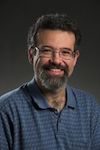
is Assistant Director of the Scientific Computing Division at Fermi National Accelerator Laboratory, where he oversees the HEPCloud program and coordinates cross-cutting initiatives and solutions across the facility. Previously, he served as manager of the Tier-1 computing facility for the CMS experiment, and as a group leader for grid services and middleware. Before joining Fermilab, he was a research scientist and postdoctoral researcher at Brookhaven National Laboratory, where he studied two-particle interferometry in heavy ion collisions and was the head of computing for the PHOBOS experiment. Dr. Holzman holds a B.S. in Mechanical Engineering from Carnegie Mellon University and a Ph.D. in Physics from the University of Illinois at Chicago.
Come join us for talks introducing two more research groups with invitations to collaborate:
Sumanta Acharya, chair and professor of mechanical, materials, and aerospace engineering
Film Cooling in Gas TurbinesŌĆöExploring Physics and Uncertainties
Modern gas turbine airfoils are subject to gas temperatures in excess of 30000 F that are well above the material limits for reliable operation. The airfoils have to be therefore actively cooled to prevent engine failure. Film cooling is commonly used and involves pushing the coolant air (by-passed from the compressor) through inclined holes drilled on the airfoil surface. In this talk, attention is focused on the flow physics of film cooling flows, and Large Eddy Simulation (LES) results from a finite-volume code are analyzed to understand the origin and development of flow structures. The spectral characteristics of both the flow and thermal fields will be studied in order to identify the frequencies associated with these structures and to examine which of these play an important role on the temperature distributions near the surface (or the cooling effectiveness). These results indicate that low frequency modes play an important role in near wall mixing and temperature distributions. The talk will also explore the role of uncertainties in boundary conditions (such as coolant inflow velocity) on the film cooling distribution. A polynomial chaos approach combined with a spectral code is used for this purpose.
Nick Miller, assistant professor of biology
Bugs!
Research in our lab focuses on the evolution and population genetics of herbivorous insects, many of which are crop pests. Current projects include adaptations to genetically modified crops, responses to plant defensive compounds and the effect of alternative food plans on population structure. Computation aspects of our research include the analysis of high-throughput sequencing data and simulating large genetic data sets under different evolutionary scenarios.
Coming up, lunch and two more talks inviting collaboration:
John G. Georgiadis, Chair and R. A. Pritzker Professor of Biomedical Engineering
Lattice Boltzmann Methods for Simulation of Diffusion-Weighted Magnetic Resonance Physics in Muscle or Brain
Diffusion tensor imaging allows in vivo measurement of the directional diffusion of water in muscle or brain. The correct interpretation of the results hinges on modeling microstructural information, water transport, and proton MR imaging physics. We have developed a class of Lattice Boltzmann methods to integrate the Bloch-Torrey partial differential equation, which governs this physics, in large domains containing cylindrical cells surrounded by complex extracellular matrix. Parallel implementation in a 8-core CPU computer system demonstrates linear speed-up, and plans are made to port this code to a multicore CPU/GPU platform.
Shuwang Li, associate professor of applied mathematics
Interface problems and an adaptive time-step scheme
Many physical and biological problems involve interfaces separating different domains. To efficiently compute the dynamics of the interface, we develop an adaptive time-step scheme and test its performance in expanding/shrinking interface problems. The idea is to map the original time and space onto a new time and space such that the interface can evolve at an arbitrary speed in the new rescaled frame. In particular, for the expanding/shrinking interface problem, we choose (1) the space scaling function so that the expanding/shrinking interface is always mapped back to its initial size, i.e. the interface does not expand/shrink in the rescaled frame; (2) the time scaling function to speed up or slow down the motion of the interface, especially at later times when the interface expands slowly or shrinks extremely fast. We will also show some examples. [ ]
Join our next seminar to hear about research that might spark some fruitful interdisciplinary collaboration:
Matthew Dixon, assistant professor of finance
Deep Learning for Spatio-Temporal Flows
Prediction and uncertainty quantification of spatio-temporal flows is a challenging problem as dynamic spatio-temporal data possess underlying complex interactions and nonlinearities. Traditional statistical modeling approaches use a data generating process, generally motivated by physical laws or constraints. With examples in traffic and high frequency trading, this talk explores the wider implications for scientific research when such interactions and nonlinearities can be captured without using a data generating process. [ ]
Jeff Wereszczynski, assistant professor of physics
Understanding Biomolecular Mechanisms With Molecular Dynamics Simulations
The physical functions and interactions of biological macromolecules form the basis for the diverse mechanisms that occur in the cell and underpin the processes that make life possible. To better understand the physical basis for how protein, DNA, and other biological macromolecules function, our group utilizes conventional and advanced molecular dynamics simulations to provide atomic-level descriptions for the kinetics and thermodynamics of systems of interest. In this talk, I will describe how we are using these methods on a variety of systems, as well as the challenges and opportunities they present. [ ]
Our second lunchtime matchmaking seminar features two talks:
Chun Liu, chair and professor of applied mathematics
Energetic Variational Approaches in Transport and Diffusion.
In the talk, I will explore the underlying mechanism governing various general diffusion processes. We will employ a general framework of energetic variational approaches, consisting of in particular, OnsagerŌĆÖs Maximum Dissipation Principles, and their specific applications in biology and physiology. We will discuss the roles of different stochastic integrals (ItoŌĆÖs form, StratonovichŌĆÖs form and other possible forms), and the procedure of optimal transport in the context of general framework of theories of linear responses. I will highlight how the mathematical analysis out to inform the numerical computation [ ].
Xian-He Sun, Distinguished Professor of Computer Science
Computing: From Compute-Centric to Data-Centric
Computing has changed from compute-centric to data-centric. Data movement becomes the major concern of computation. In this introduction talk we first review the design principle of parallel numerical algorithms, and then discuss data access concerns of these algorithms. Finally, we will introduce some of the current solutions of memory and I/O systems design, and the new concepts of memory-bounded and data-concurrency for algorithm design and system support [ ].
This series of lunchtime seminars brings together researchers with intersecting interests in scientific computation. It is intended for faculty and research students desiring interdisciplinary collaboration. There will be presentations followed by discussion.
The first seminar provides an introduction to CISC and the seed grants for scientific computation [ ].
Algorithms for computational biochemistry and data analysis.
Towards the goal of predicting how small molecules interact with proteins, his group works on stochastic sampling algorithms, statistical estimators, and computational biochemistry software. To a lesser extent, he is also working on Bayesian methods to analyze complementary laboratory experiments [ ].
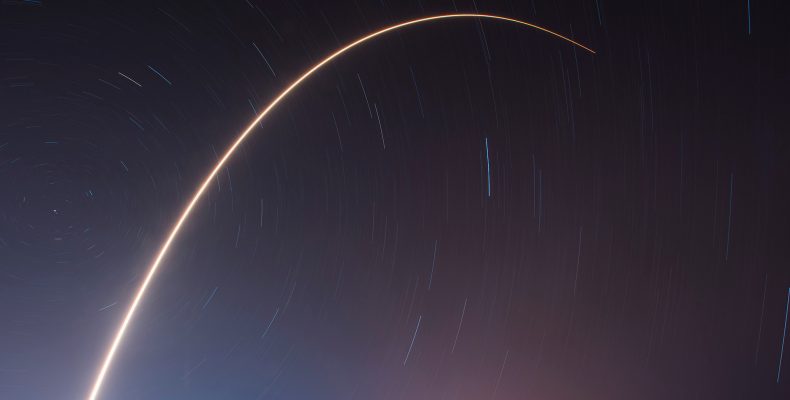
The Center for Interdisciplinary Scientific Computation (CISC) is offering seed grants of up to $40,000 for the 2018 calendar year to fund teams of investigators from at least two academic units.
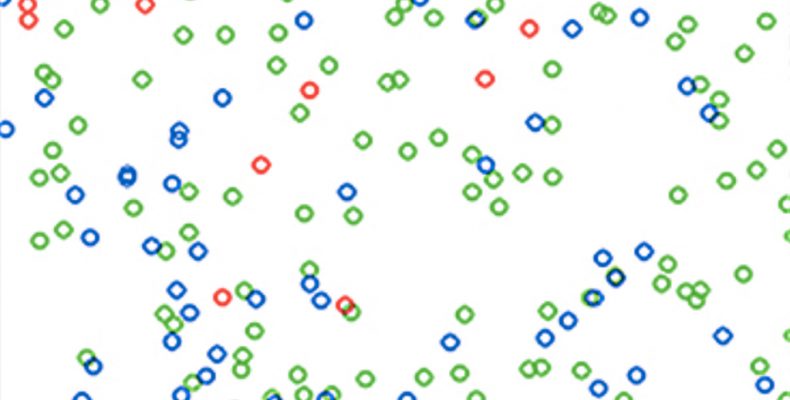
The goal of the SAMSI program is to explore the potential of QMC and other deterministic, randomized and hybrid sampling methods for a wide range of applications, including the numerical solution of PDEs; machine learning; computer graphics; Markov chain sampling, like MCMC and MCQMC; sequential Monte Carlo; and uncertainty quantification.
See for details on how to participate
┬╠├▒╔ńŌĆÖs Center for Interdisciplinary Scientific Computation (CISC) was formed in spring 2017 to act as a focal point and catalyst to strengthen the use of computation to solve important academic and practical problems. A key part of its mission is to encourage new interdisciplinary scientific computation research. In support of that, the Center is offering seed grants of $30,000ŌĆō$40,000 for the 2018 calendar year to fund teams of investigators from at least two academic units who will work together with the aim of developing and submitting viable research proposals to external funding agencies.
Application Deadline: October 31, 2017 (5:00 p.m.)
A routing sheet should be submitted through Cayuse by the deadline. Use sponsor: CISC ŌĆō Center for Interdisciplinary Scientific Computation (┬╠├▒╔ń)
Submit proposals in a single PDF to osrp@illinoistech.edu.
The following components are required:
- Title of the proposal
- Abstract (250 words max)
- Description of the research program and its significance: this should be understandable to academics not necessarily in the disciplines involved.
- Team members: the team must include ┬╠├▒╔ń faculty members from at least two academic units; preference is given to proposals where the principal investigator is from the College of Science; involvement of ┬╠├▒╔ń students and collaboration with other institutions is encouraged.
- Plan to carry out the research: the duties of each team member; an explanation of why each team member is critical to the success of the research; a list of outcomes.
- Commitment to submit proposals for future external funding to continue the research program: provide links to relevant requests for proposals (RFPs); explain the suitability of the proposed research program for these RFPs.
- Budget: support for research assistant(s), teaching relief, consumables, conference attendance, and other reasonable research expenses are allowable; explain how each budget item supports the research program and the goal of future external funding; a letter of support from the department chair is required if teaching relief is requested. Indirect costs are not allowed. Please provide a detailed line item budget in table format and a detailed budget justification.
- Two-page CVs of faculty and senior researchers
- The body of the proposal, i.e., all but the budget and CVs, should be no more than 15 pages.
A panel will review proposals and notify the successful team by November 30, 2017. A one-page interim report will be required by July 31, 2018. A three-page final report will be required by March 31, 2019, detailing what was achieved and what proposals for external funding were submitted. For questions, contact Fred J. Hickernell, CISC Director, hickernell@illinoistech.edu, x7-8983.

